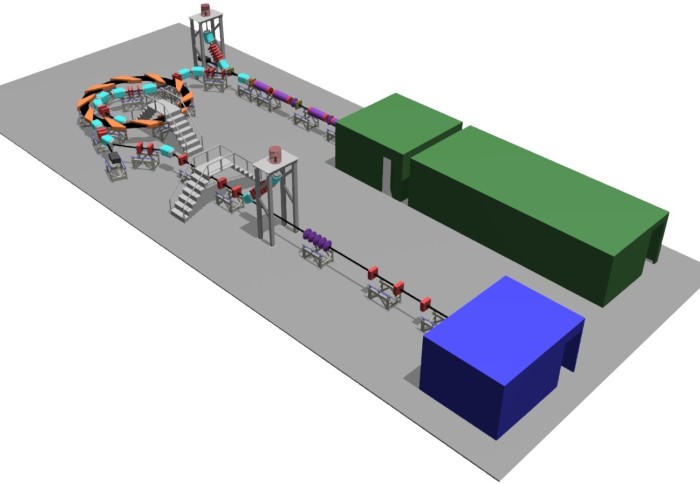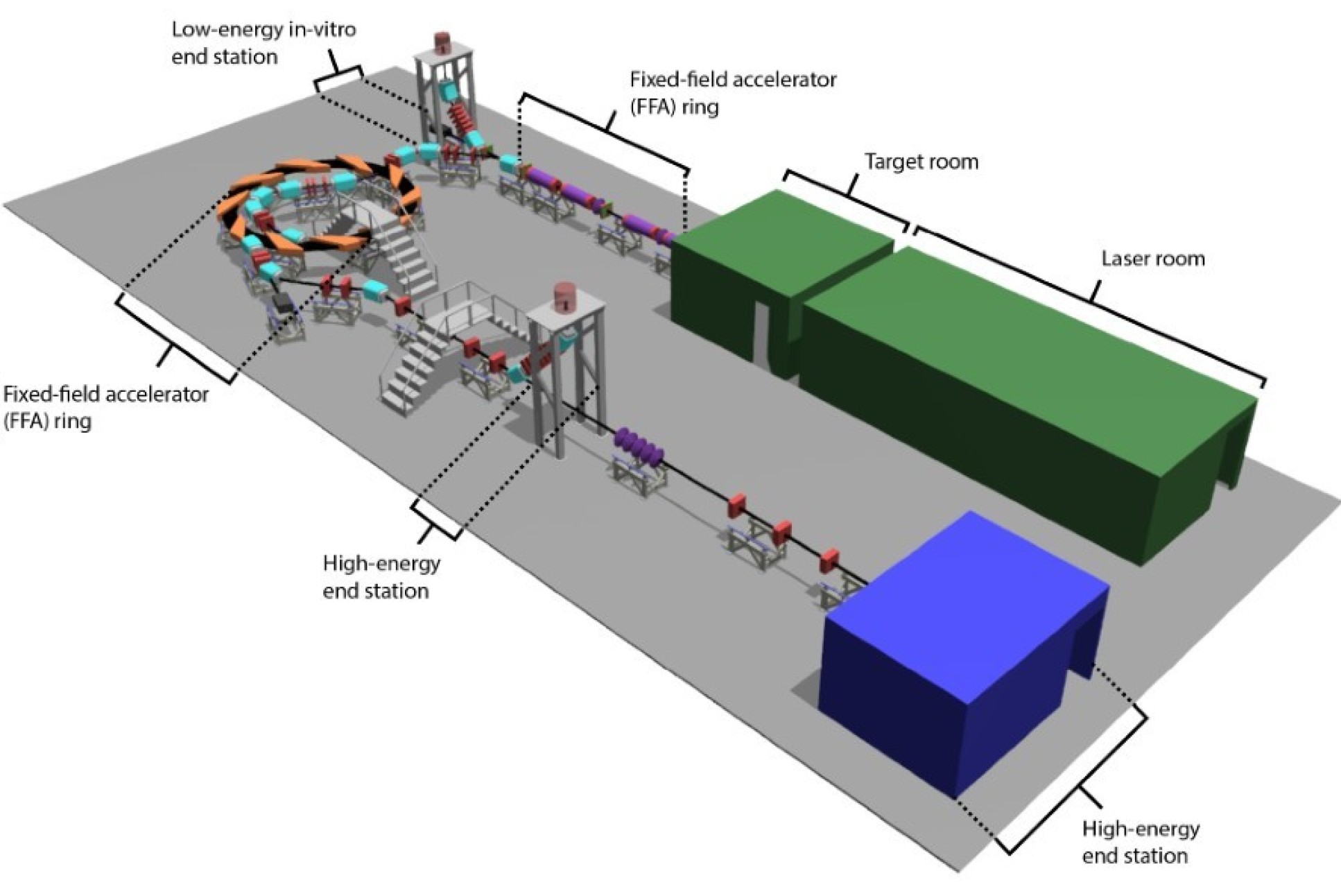Ion beam cancer therapy facility gets a £2m development boost

Concept design for the Ion Therapy Research Facility
Researchers aiming to make cheaper, more flexible ion beam therapy for cancer treatment a reality have been awarded £2m to develop their plans.
Physicists from Imperial College London are amongst those hoping to create the Ion Therapy Research Facility (ITRF) with new funding from UK Research and Innovation (UKRI). The facility will allow researchers to carry out fundamental studies on the properties of ion beam interactions with biological tissue, while also testing new therapies in combination with drug regimens.
The ITRF will catapult the UK to the front of the technological revolution taking place in laser capture and ion beam radiobiology. Professor Ken Long
Radiation therapy is an established anticancer treatment. Conventionally, radiation therapy is delivered by machines that accelerate electrons to produce high-energy X-ray beams directed at a tumour to kill cancer cells. However, as the X-ray beam passes through the body, healthy tissue and sensitive organs can also be damaged.
Ion beam therapy instead uses accelerated atomic particles such as protons and carbon ions to kill tumours. Because these beams can target their tumour-destroying properties more precisely by depositing nearly all their energy at the site of the tumour, they avoid damage to the tissue surrounding the tumour.
Proton beams are not widely available at present. The technological advances made by the new facility will expand the types of beams that could be clinically useful, including several types of ions. The designs for the facility were unveiled in 2020, and the new funding will help researchers scope out the costs and practicalities of building it, resulting in a proposal for construction.
Revolutionising cancer treatment
The proposed new ITRF will be served by the LhARA (Laser-hybrid Accelerator for Radiobiological Applications) collaboration, for which Professor Ken Long, from the Department of Physics at Imperial, is co-spokesperson.
Professor Long said: “Served by LhARA, the Ion Therapy Research Facility is a ground-breaking biomedical initiative that will revolutionise cancer treatment. Clinicians, biologists, physicists, accelerator scientists and other specialists from across the UK and Europe are all pooling their expertise to build this world-leading research facility.
“Not only will it drive a transformation in cancer care by delivering breakthroughs in radiation biology, accelerator technology, diagnostics and instrumentation, but the ITRF is an important infrastructure project which will create jobs, drive investment, and attract additional scientists from around the world to the UK.
“The ITRF will catapult the UK to the front of the technological revolution taking place in laser capture and ion beam radiobiology.”
Hybrid ion accelerators
The UK has already invested in two clinical proton machines at the Christie Hospital in Manchester and at UCLH in London. Currently the UK has no ion beam facilities, as these are too expensive, not so well developed, and rely on large synchrotron machines to accelerate the ions.
The LhARA scientists are developing a completely new way to produce these important particles using lasers. Laser-driven proton and ion sources offer enormous potential for clinical practice by providing more flexible, compact and cost-effective multi-ion sources.

The ITRF would be a hybrid accelerator, combining established technology with the unique features of a laser accelerator. As a result, it would be able to deliver much higher instantaneous dose rates than any other approach currently available and would be capable of delivering high doses of radiation in multiple beams at the same time, allowing multiple experiments to be performed in parallel.
This design is unique to LhARA and would help researchers discover not just how cancer cells are killed by radiation therapy, but how this can be improved and individualised for cancer patients, and how our normal tissue processes respond to radiation, such as how they age.
Innovation infrastructure
The new funding is part of the UK Research and Innovation (UKRI) Infrastructure Fund, which is investing a total of £481 million into a portfolio of research and innovation infrastructure investments to maintain the UK’s position as a research and innovation superpower.
Imperial researchers are involved in several of the newly funded projects, including the UK’s national synchrotron the Diamond Light Source, the Hyper-Kamiokande neutrino detector, the Large Hadron Collider beauty (LHCb) experiment, the UK Biobank, and the X-ray Free Electron Laser.
Article text (excluding photos or graphics) © Imperial College London.
Photos and graphics subject to third party copyright used with permission or © Imperial College London.
Reporter
Hayley Dunning
Communications Division